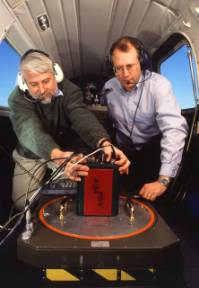| Research |

|
|
1 - Research
2 - Page 2 3 - Page 3 4 - Page 4 5 - Page 5 6 - Page 6 7 - Page 7 8 - Page 8 9 - Page 9 10 - Page 10 |


Charles L. WalthallUSDA-ARS | |||||||||||||||||||||||
| - | ENVI | http://www.rsinc.com/ |
| - | ERDAS | http://gis.leica-geosystems.com/ |
| - | PCI | http://www.pci.on.ca/ |
| - | TNT-MIPS | http://www.microimages.com/ |
| or the following free systems: | ||
| - | NIH Image | http://rsb.info.nih.gov/nih-image/ |
| - | Multispec | http://dynamo.ecn.purdue.edu/~biehl/MultiSpec/ |
Contents
- Sources of Imagery
- A Working Philosophy for Airborne Remote Sensing: S/N
- A Primer on Imaging Theory: What to Expect From Imagery
- Simple Tools for Checking Image Data Quality
- Choice of Spectral Bands
- Final Thoughts and Suggestions
- Resources and References
| [1] 2 3 4 5 6 7 8 9 10 Next >> |

